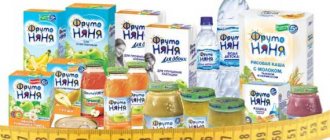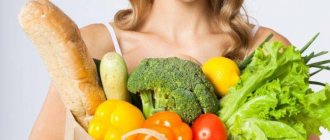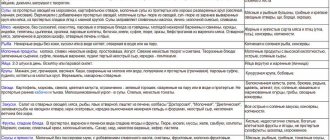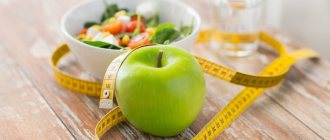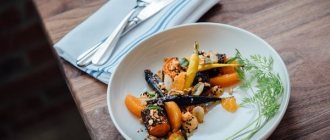The 1000 calorie diet is one of the most effective methods of combating excess weight. She has a varied diet and quick results: up to minus 12 extra pounds in 4 weeks! Get a diet menu and lose weight!
- Reviews from those who have lost weight
Author: Kristina Lobanovskaya, doctor, practicing nutritionist Article updated: 11/10/2020
Ask a Question
Among the most effective methods of combating excess weight, many experts highlight nutrition with calorie counting. When used correctly, this approach is guaranteed to achieve the desired result, since it takes into account the individual daily caloric intake, determined taking into account the age, gender, activity level, usual diet and body parameters of a particular person. To lose weight, it is recommended to consume 70–80% of the established calorie requirement, which creates a calorie deficit and forces the body to use its own fat reserves to replenish energy. Based on this principle, a universal weight loss method was created - the “1000 calorie” diet.
Fractional meal plan for a balanced diet of 1000 calories per day
The energy value of foods, that is, their calorie content, is measured in calories. This refers to the amount of energy the body receives from food when it is fully absorbed.
There is a basic daily minimum amount of calories that a person should consume to ensure normal mental and physical activity. Each person's energy needs are different and depend on age, gender, lifestyle, and physiological characteristics.
Often, we receive much more calories from food than our body requires, and this entails a set of extra pounds. Limiting the number of calories you consume is the basis of any weight loss diet.
Recently, the 1000 calorie express diet has become especially popular, the main requirements of which are:
- the total number of calories of the entire daily diet should not be more than 1000 calories
- eat plant foods daily (vegetables, herbs, fruits)
- mandatory inclusion of protein foods of animal origin
- nutrition during the diet is quite balanced and includes fats, carbohydrates, proteins, mineral and vitamin components
It is very important to take into account not only the volume and calorie content of food consumed, but also how it is consumed. Our usual three meals a day is not the best option for this diet, because:
- The longer the intervals between meals, the lower the level of glucose in the blood, and the higher the level of cortisol (stress hormone). And it, in turn, changes metabolic processes in the body.
- With three meals a day, our body has time to absorb all the energy from the food received, and a new portion is not expected soon. This leads to the fact that the body begins to store substances “in reserve” in the form of fat deposits.
- The stronger our hunger, the stronger our desire to eat large amounts of food.
With fractional feeding, food is delivered at equal, short intervals. Therefore, fat is not stored “for a rainy day.” In addition, small portions are digested faster, which promotes full absorption of nutrients.
Divide your calories correctly
Fractional meals on a 1000 calorie diet involve the following meals:
- breakfast first - “slow carbohydrates” (cereals, cereals, bread) and low-fat proteins (cottage cheese, eggs). These products are digested for a long time, providing a supply of energy for the whole day. Therefore, you will not feel hungry for a long time.
- second breakfast (lunch) – fruit or juice, nuts.
- lunch - soups (vegetable, in weak fish or chicken broth), stewed vegetables, lean meat.
- afternoon snack - nuts, fruits, dairy products.
- dinner - vegetables, a small piece of fish, meat, seafood is allowed.
- evening snack - fermented milk products (if you have a strong desire for something sweet - dried fruits or a spoonful of honey).
The recommended calorie distribution for this diet is as follows:
- breakfast with lunch – 300 kcal each
- intermediate meals – 50-100 kcal
- dinner - 200-250 kcal
Basic rules for this type of diet:
- intermediate meals should be 2 times less than the main meals.
- It is better to make breakfast the most energetically nutritious meal.
- break between meals – not exceeding 3.5 hours.
- The last snack is no later than 1.5 hours before bedtime.
- Dinner should not be the main meal of the day.
- The daily water requirement is at least 1.5-2 liters.
- drink water no later than 30 minutes before meals and no earlier than an hour after it.
- You need to eat strictly according to the schedule.
- If one meal is missed, you cannot add this portion to the next meal.
- eat slowly, chewing your food thoroughly - then the food is better absorbed, and the brain quickly receives a signal of satiety.
- There is no need to count calories in the tea or coffee you drink; the amount of milk and sugar added to the drinks is calculated.
- Avoid excessive physical activity, give preference to yoga or Pilates.
- use small-sized dishes - the reduction in portions will not be noticeable.
- Buy a digital kitchen scale to weigh a portion of food and calculate how many calories it contains.
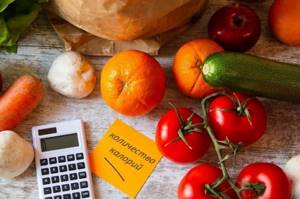
We draw your attention to the fact that the amount of 1000 calories is much less than what the average adult needs during the day.
Therefore, you can switch to a diet with a consumption of less than 1200 calories only after consulting a doctor.
Recipes for recommended dishes for weight loss
When losing weight, you want to eat not only healthy, but also tasty. Many are accustomed to fried foods or dishes seasoned with various spices or sauces to enhance the taste, and proper healthy eating seems to them something bland and boring, endlessly chewing oatmeal with water and lettuce leaves. But this is a mistaken opinion.
It is possible to eat tasty food and lose weight, especially if you know a few interesting recipes that diversify your diet.
Steamed chicken cutlets
Ingredients:
- 300 gr. chicken fillet;
- 2 onions;
- 1 clove of garlic;
- 1 egg;
- salt, pepper to taste.
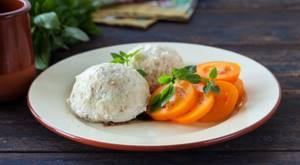
Steamed chicken cutlets
Cooking process:
- Grind the fillet, onion and garlic in a meat grinder.
- Stir in the egg, salt and pepper the resulting minced chicken.
- Make cutlets.
- Place in a steamer for 30 minutes.
- You can add lettuce leaves to serve.
Calorie content: 129 kcal per 100 g.
Fish cutlets
Ingredients:
- 1 kg of fish fillet or prepared minced fish;
- 1 onion;
- 1 egg;
- spices to taste.

Fish cutlets
Cooking process:
- Pass the fish fillet through a meat grinder, add twisted onions to the minced meat.
- Add egg, spices, mix.
- Form cutlets from the mixture.
- Fry in a frying pan in olive oil, turning occasionally, for 5-7 minutes or cook in a double boiler until tender.
Calorie content: 180 kcal per 100 g. (when frying), 80 kcal per 100 g (steamed).
Oatmeal pancake
Ingredients:
- 1 egg;
- 3 tbsp. oatmeal;
- 3 tbsp. milk;
- a pinch of salt.

Oatmeal pancake
Cooking process:
- Grind the oatmeal using a blender until it forms small flakes.
- Add egg, milk, salt and mix well.
- Cook in a non-stick frying pan, browning on both sides.
- You can use cottage cheese, peanut butter or cheese as a filling.
Calorie content: 170 kcal per 100 g.
Banana chips
Ingredients:
- 3 bananas;
- 20 ml grape seed oil;
- a pinch of salt.
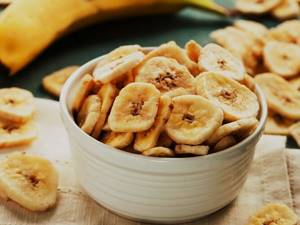
Banana chips
Cooking process:
- Wash and peel bananas.
- Cut the bananas into thin slices diagonally.
- Sprinkle the resulting mixture with grape seed oil.
- Line a baking sheet with baking parchment, lay out banana slices and sprinkle with salt.
- Bake in the oven at 220-180°C for 15 minutes.
- Leave the chips to dry in the fresh air for 1.5-2 hours.
Calorie content : 123 kcal per 100 g.
Vegetable stew with chicken
Ingredients for 3 servings:
- 200 gr. chicken breast;
- 1 small zucchini;
- 100 gr. broccoli;
- 100 gr. cauliflower;
- 1 bell pepper;
- 2 tomatoes;
- 1 onion;
- 3 cloves of garlic;
- 2 tbsp. adjika;
- paprika, rosemary, herbs de Provence, curry, basil;
- soy sauce.
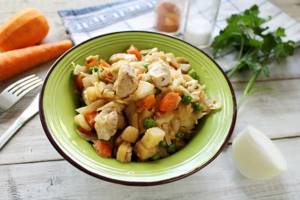
Vegetable stew with chicken
Cooking process:
- Wash the vegetables, cut the peppers, zucchini and chicken into strips, chop the tomatoes into slices, and chop the onion into small cubes.
- Separate broccoli and cauliflower into florets.
- Add spices to the mixture to your taste.
- Place the entire mixture in a slow cooker and simmer for 1 hour.
- In 5 min. Before the end of cooking, add chopped garlic.
- If you don't have a multicooker, you can bake the stew in the oven.
- Serve on lettuce leaves.
Calorie content : 156 kcal per 100 g.
Mushroom soup
Ingredients:
- 750 gr. chicken leg;
- 300 gr. champignons;
- 300 gr. potatoes;
- 100 gr. carrots;
- 50 gr. Luke;
- 15 gr. vegetable oil.
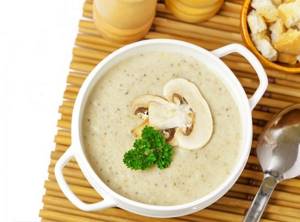
Mushroom soup
Cooking process:
- Boil chicken broth.
- Fry onions and carrots for 3-5 minutes.
- Add champignons to the frying and cook for another 15 minutes.
- Chop the chicken.
- Add potatoes to the broth, fry and cook until tender.
- Return the meat to the pan, add salt and spices
- Bring the soup to a boil, reduce heat and simmer for another 5 minutes.
Calorie content – 53 kcal per 100 g.
Vegetable salad with chicken
Ingredients:
- 50 gr. chicken breast;
- 40 gr. Chinese cabbage;
- 50 gr. green peas;
- 2 tbsp sour cream;
- 50 gr. carrots.
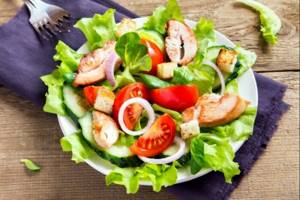
Vegetable salad with chicken
Cooking process:
- Stew the chicken breast without oil, divide into small pieces.
- Boil carrots and cut into small cubes.
- Chop the Chinese cabbage (can be replaced with lettuce leaves).
- Mix all ingredients, season with sour cream.
Calorie content – 197 kcal per serving.
Brussels sprouts casserole
Ingredients:
- 200 gr. Brussels sprouts;
- 150 gr. bell pepper;
- 4 eggs;
- 100 ml milk;
- 60 gr. cheese;
- Greens, salt, pepper.
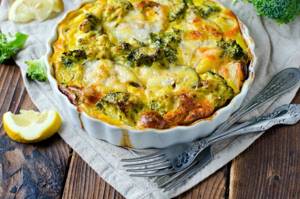
Brussels sprouts casserole
Cooking process:
- Boil cabbage in salted water for 3-5 minutes.
- Finely chop the pepper and chop the greens.
- Beat eggs with milk, add spices.
- Chop the cabbage and place in the mold.
- Add pepper and herbs on top, pour over the egg-milk mixture.
- Bake in the oven for 40 minutes at 180°C.
- A few minutes before it's ready, sprinkle the casserole with grated cheese.
Calorie content - 102 kcal per 100 g.
Salad with red fish
Ingredients:
- 100 gr. red fish;
- 2 eggs;
- 2 tbsp. canned peas;
- Yogurt or sour cream 10%.
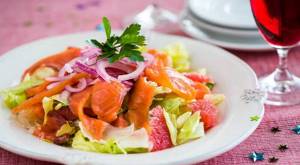
Salad with red fish
- Boil the eggs.
- Cut the ingredients into cubes.
- Mix the ingredients and season with yogurt or sour cream.
Calorie content : 122 kcal per 100 g.
There are a huge variety of recipes for preparing dietary dishes, and everyone can choose something tasty, healthy and at the same time affordable. If you know a few suitable recipes, you can interestingly diversify your menu so that its nutritional value remains at 1000 calories per day.
It is important to remember that when adhering to such a diet, you must be attentive to your body and be sensitive to any symptoms, since the diet is very low in calories. You should not try to lose weight by any means, reaching the point of health problems and hungry fainting.
Only competent weight loss will help you achieve your goal without harm to the body and will not allow the extra pounds to quickly return.
A set of low-calorie foods for a 1000 calorie per day diet: list
In this diet, the main ones should be foods that have a low glycemic index. These are most vegetables (raw or stewed), fruits and berries (except grapes, melon and bananas).
In addition, it is necessary to consume lean varieties of meat, boiled or baked without adding fat:
- chicken
- turkey
- veal
- a rabbit
It is recommended to eat fish more often:
- cod
- perch
- navaga
- tuna
- pollock

Be sure to include eggs in small quantities and low-fat dairy products in your diet:
- kefir
- cottage cheese
- whey
- yogurt
In addition, be sure to eat porridge:
- oatmeal
- buckwheat
- barley
- corn
- brown, wild rice
Season your food with spices that speed up your metabolism:
- hot red pepper
- caraway seeds
- cinnamon
- dry ginger

In addition to purified water, you can drink the following drinks throughout the day:
- juice (diluted)
- tea (preferably green)
- some coffee
- cocoa in small quantities
Advantages

If you follow all the rules, you will always be full and in high spirits. A large amount of protein in your diet prevents the loss of muscle mass (as a result, your skin will not turn into flabby).
Carbohydrate foods can supply the brain with glucose and prevent irritability that is often observed during low-carb diets.
Plant fiber fills the stomach and prevents constant hunger pangs.
Thanks to dairy products, the body is saturated with a sufficient amount of calcium.
A low-calorie menu per day will provide good results. Alternating proteins and carbohydrates promotes uniform fat burning. At the same time, the body does not go into saving mode.
What foods should you not eat on a 1000 calorie per day diet: list
As with any diet aimed at weight loss, you should avoid high-calorie foods:
- bread and bakery products made from premium flour (replace with products made from rye, oatmeal and whole grain flour); fried food, since fat is used during frying.
- mayonnaise sauces, ketchup (season dishes with vegetable oil or low-fat yogurt).
- fatty meat, fish and dairy products.
- jam and marmalade (use natural honey).
- sweet carbonated drinks (replace with green tea or diluted juices).
- sweets (it is better to replace them with a piece of dark chocolate).
- alcohol (a glass of wine or beer can contain half the daily calorie intake).
- fast food.
- smoked meats, sausages (due to the high salt and fat content).
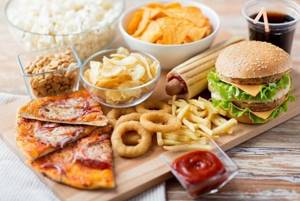
In addition, it is recommended to limit consumption of:
- unpolished grains
- starchy vegetables (potatoes, Jerusalem artichoke, beets, legumes)
- very sweet fruits (grapes, figs, dates, persimmons)
- coffee (no more than 2 cups)
- butter (no more than 20 g)
What can you eat for 1000 calories a day: list of dishes
A diet designed to take 1000 calories a day is good because there is no need to limit yourself too much in nutrition and give up your usual and favorite foods. The main thing is to know how many calories a serving of a particular dish contains. We offer a list of dishes that you can include in your daily diet:
For breakfast (250-300 kcal):
- 2 egg omelet with vegetables
- cottage cheese casserole (120 g)
- portion of mashed potatoes without oil
- half a plate of milk rice porridge
- pancake with cottage cheese (2 pcs.)
- fruit salad of banana, persimmon, kiwi, etc. with a spoon of yogurt
- oatmeal in water with dried apricots and prunes (200 g)
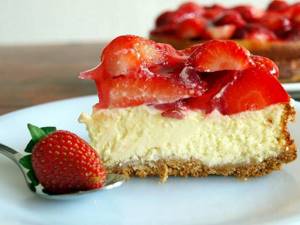
For lunch (300 kcal):
- small plate of meat salad
- vegetable soup with pasta
- liver pate (120 g)
- baked fish with sour cream sauce (150 g)
- meatballs (2 pcs.)
- chicken balls (2 pcs.)
- beef goulash (150 g)
- pizza with seafood, olives and herbs (100 g)
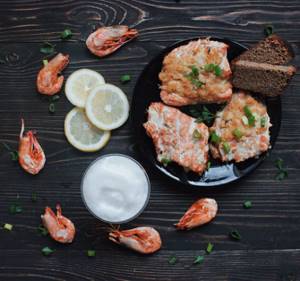
For dinner (200-300 kcal):
- cabbage rolls without sauce (2 pcs.)
- the vinaigrette
- fish casserole with vegetables (150 g)
- eggplant caviar (150g)
- chicken drumstick in low-fat sauce (1 pc.)
- Greek salad with low-fat cottage cheese
- pumpkin puree soup (200 g)
- small plate of mushroom risotto
- trout baked with tomatoes (200 g)

Diet dinner
Useful tips
The diet requires the necessary attitude; it is not recommended to start it in a depressed state or immediately after an illness. It is better to start a diet in a calm state of mind, having set a goal for yourself - to lose weight. The correct solution would be to keep a diary, i.e. record foods and calories consumed per day. The diary will clearly show how to meet the figure of 1000. In the same diary, you can keep track of the lost kilograms, which will be an incentive to further continue proper nutrition.
You need to eat in small portions, without rushing into your daily diet at once.
It is better to create a menu slowly, keeping in mind the details of individual nutrition. It will not be superfluous to think about the issue of food away from home, when traveling, where the necessary products may not be available. In this case, they need to find a replacement. Fitness classes will help you get excellent results. They leave the diet gradually, without starting to eat everything, otherwise the effect will be lost in a short time.
THESE ARTICLES WILL HELP YOU LOSE WEIGHT
Your feedback on the article:
( 338 ratings, average: 4.55 out of 5)
How to burn 1000 calories a day?
According to nutritionists, 1000 calories is the equivalent of 111 grams of body fat. Is it possible to get rid of them in a day?
Fitness trainers say that spending 1000 calories in one workout is almost impossible. Losing 600 kcal is already a big success. The effectiveness of exercise for weight loss depends on many factors:
- human fitness
- regularity of classes
- individual characteristics of the body
- diet and nutrition
- emotional mood
According to experts, regular morning exercises, performed at a very fast pace, help burn a large number of calories. We offer this option:
I circle:
- jumping with arms and legs spread to the sides - 100 times
- squats – 100 times
- twisting – 75 times
- push-ups – 20 times
- burpees – 10 times

round 2:
- jumping with arms and legs spread to the sides - 50 times
- twisting – 45 times
- squats – 50 times
- “plank” – 45 s
The most effective types of workouts for quick calorie loss are:
- cycling – 600 kcal/h
- rock climbing – 700 kcal/h
- jumping rope – 650 kcal/h
- combat sports – 700 kcal/h
- running at an average pace – 600 kcal/h
- tennis – 800 kcal/h
- swimming at a moderate pace – 600 kcal/hour
- hula hoop – 400 kcal/h
- step aerobics, rhythmic dancing, belly dancing – 350 kcal/hour

Taking into account the listed indicators, you can determine the necessary physical activity for yourself in order to burn 1000 calories per day:
- start your day with a 30-minute morning jog
- engage in intense physical training for at least 1.5 hours a day
- If possible, walk to work at an intense pace (this way you can burn 150 kcal in half an hour)
- In the evening, while watching TV, spin the hula hoop
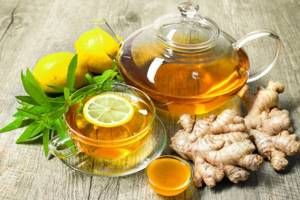
In addition, follow these simple recommendations:
- Every morning, drink a glass of warm water with a teaspoon of lemon juice on an empty stomach - this will help start the metabolic process
- laugh more - 15 minutes of laughter have been proven to burn the same amount of calories as a chocolate bar
- add ginger root to your tea and season your food with cayenne pepper - this will speed up the process of digesting food; clean your apartment more often - general cleaning within an hour burns about 300 kcal
- play with children - active walks will help burn up to 400 kcal per hour
- Avoid excessive “wrapping up” - in the cold the body spends more calories. This is why it is recommended to sleep naked
How much weight can you lose in a month on a 1000 calorie per day diet?
When following a 1000 calorie diet, on average you lose about 0.5-2 kg per week. In the first days, the extra pounds disappear faster. Then this process slows down. Thus, you can lose 3-8 kg in a month.
However, as we have already mentioned, eating according to the “1000 calories a day” principle is a method of “emergency” weight loss. Nutritionists insist that such a diet can be used for no more than a week. The maximum time in extreme cases when you need to lose excess weight quickly is 3 weeks.

You can lose 3-8 kg
Exceeding the recommended period can lead to negative consequences:
- slowing down metabolic processes
- exhaustion of the body
- hair loss
- disorders of the digestive, nervous, cardiac systems
In addition, do not forget that, as with any other diet, you need to return to your usual diet gradually, adding an additional 100-150 kcal per day to your diet. Otherwise, after finishing the diet, you can very quickly gain back the kilograms that you lost with such difficulty. It is recommended to continue to adhere to fractional meals and limit the consumption of high-calorie foods.
Contraindications
In most cases, using the 1000 calorie diet for weight loss does not have a negative impact. However, there are restrictions that must be taken into account in order not to harm your health. This is especially important if you have a lot of extra pounds. For people with a high degree of obesity, it is better to contact a nutritionist who will develop an individual menu, since in the above examples the amount of food may not be enough to maintain the vital functions of the body.
Adhering to such a low-calorie weight loss method is contraindicated in the following cases:
- during the rehabilitation period after suffering a serious illness or surgery;
- during pregnancy and breastfeeding;
- in childhood and old age;
- during intense sports training or when performing heavy physical work.
You should also be careful about such a significant reduction in calorie intake if you have serious health problems, especially during periods of exacerbation of chronic diseases.
Diet 1000 calories a day: reviews and weight loss results
Olga, 27 years old:
“I was on a diet for 2 weeks and lost 4 kg. In general, I'm pleased with the result. I wasn’t hungry, there was enough food. Sometimes I could even indulge in some candy, but in that case I had to refuse dinner. The result has lasted for 4 months.”
Elena, 21 years old:
“The diet is excellent, I lost 9 kg in 3 weeks. I know that you can’t sit on it for more than a week, but I really want to lose weight by summer. I don’t know whether the previous volumes will return after the diet. I hope no. I’ll try to continue limiting myself.”
Galina, 40 years old:
“After a week of dieting, I lost only 500 g, which returned very quickly over the next 2 days of regular eating. I understand that you just need to eat right and exclude sweets and starchy foods, but it’s so difficult...”
Anna, 38 years old:
“I was on a diet for 2 weeks. I managed to lose 4 kg, of which 2 kg “returned”. But there is still a positive result. In addition, during this period the body has become accustomed to consuming less, and satiety comes faster than before. And I still adhere to the rules of fractional meals.”
